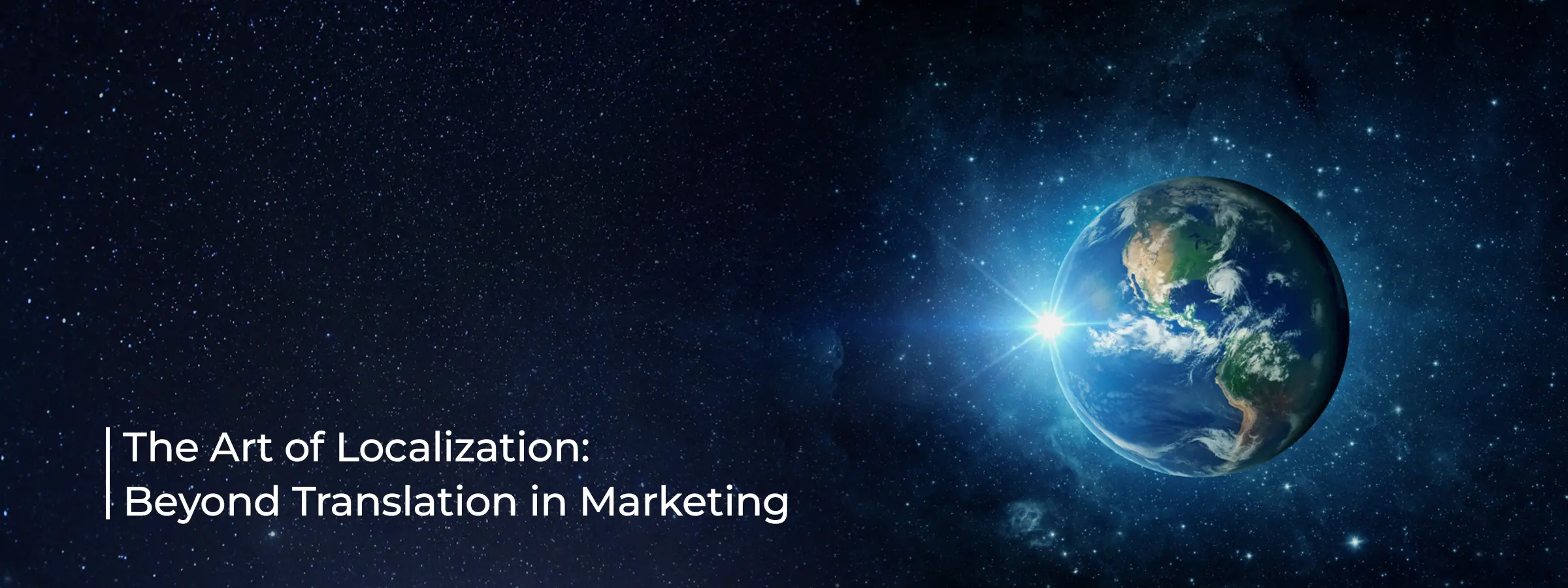
In an era where global reach is not just a possibility but a necessity for growth-minded businesses, the power of effective communication cannot be overstated. Yet, as many advertising and marketing organizations have discovered, crossing language barriers is just the first step. The real magic lies in the art of localisation—a nuanced process that goes far beyond simple translation to embrace each target market's cultural, emotional, and contextual subtleties. Today, we dive into how mastering this art form can dramatically enhance business expansion, sales, customer service, and engagement.
Localisation involves adapting your marketing content and strategies to fit your target audience's linguistic and cultural norms. It’s about understanding that what works in one country or region might not resonate in another due to differences in culture, social norms, legal requirements, and consumer behaviour. Localisation makes your brand relatable and your messages impactful, fostering a connection that transcends linguistic boundaries.
1) Cultural Nuance: The Heartbeat of Effective Marketing Imagine launching a marketing campaign in a new region, only to find that the imagery, colours, or symbols you used to carry negative connotations there. Localisation helps you navigate these cultural nuances, ensuring your branding strikes the right chord with each audience. It's about ensuring that humour, idioms, and cultural references are not just translated but transformed to resonate with local sensibilities.
2) Customized Customer Experiences Localization plays a pivotal role in customer service and engagement, making consumers feel valued and understood. By localizing your website, customer support, and interaction channels, you can provide customers a seamless, intuitive experience regardless of their language or location. This level of personalization builds trust and loyalty, key ingredients for long-term customer relationships.
3) Localization and Sales: A Symbiotic Relationship Localised marketing content does more than just attract attention; it increases conversion rates. Consumers are more likely to purchase from a brand that speaks their language—literally and figuratively. You can significantly boost your sales in new markets by tailoring your product descriptions, marketing materials, and advertising campaigns to reflect local tastes and preferences.
4) Beyond Words: The Significance of SEO in Localization Localising content also means optimising it for regional search engines. Understanding local search habits, using the right keywords, and adapting your SEO strategy can increase your visibility and attract more traffic. In the digital age, visibility is currency, and localisation ensures you are seen and heard in the crowded online marketplace.
The journey of localisation is continuous and ever-evolving. It requires a deep understanding of each target market and a commitment to adapting your strategies as markets and consumer behaviours change. Businesses that excel in localization don't just see it as a task to be checked off but as a strategic element of their global expansion efforts.
For advertising and marketing organizations at the awareness stage, exploring the potential of
language services is an exciting venture. The key is to partner with language and localisation experts
who can guide you through the intricacies of this process. Together, you can create marketing
campaigns that are not just translated but truly transformed, ensuring your message is not just
heard but felt, leading to unparalleled growth and success in the global marketplace.
Localisation is not just an art; it's a competitive advantage in today's global economy. Going beyond
translation to connect with your audience on a deeply cultural level opens up a world of
opportunities for your business. The question is no longer whether to localize, but how well you can
execute this critical strategy to win hearts and markets across the globe.
© 2024 WHITE GLOBE GROUP PVT LTD